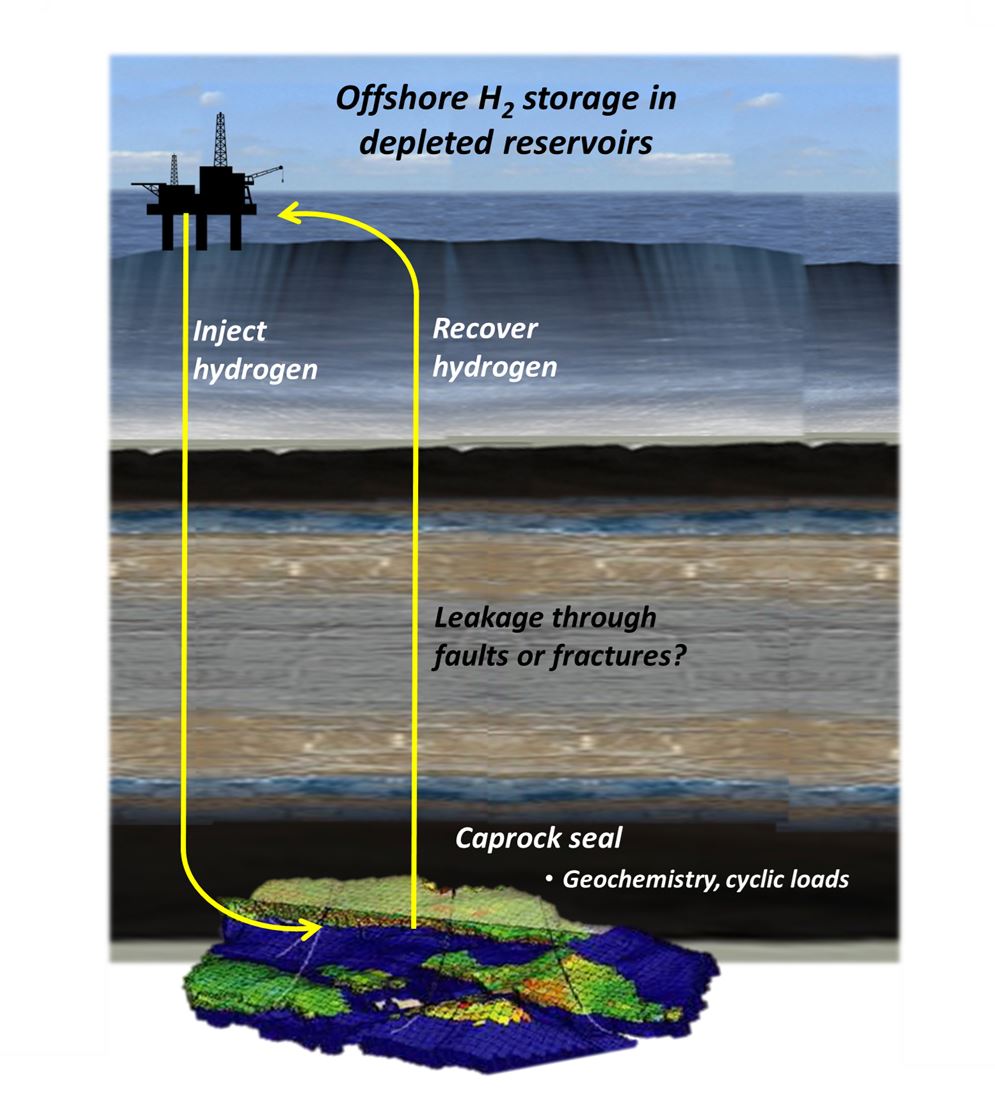Emissions from petroleum production stand for over 25% of Norway's total CO2 emissions, and these must be significantly reduced for the country to reach its ambitions in the Paris Agreement. One way to reduce these emissions is to go over to renewable energies to power all the operations and the offshore platforms themselves. However, due to the intermittent nature of renewable energy production such as wind and solar sources, it is necessary to be able to store surplus energy to make it available when production levels drop (e.g. at night or when the wind stops blowing).

In the present project HyStorm we investigate whether energy, in the form of hydrogen (H2), can be stored safely underground in abandoned oil and gas reservoirs. These are widely available in Norway, and their use for H2 storage can open for a renewable offshore future for the country by powering petroleum platforms. The project involves a national team of world-renowned experts in the fields of geochemistry (chemistry applied to mineral reactions in rocks), geomechanics (solid mechanics applied to porous rocks), materials science and reservoir flow modelling (study of the pore fluid flow in underground rocks) from SINTEF, NORCE and the University of Oslo.
Results
Numerical simulations of cyclic injection / production from a reservoir show that it is important not to completely empty the reservoir every cycle, otherwise areas around the reservoir are deforming more and more, with the risk of the rock fracturing and a potential leakage path appearing. New simulations give however less indication that the caprock can fracture, when the model takes into account the anisotropy of the caprock (indicating different properties in different directions).
At a hydrogen seminar in Oslo in April 2024 organized by the project's postdoc at UiO, M. Masoudi, other results from the project were also presented, namely SINTEF Digital's modelling of hydrogen's solubility in water and brine. This is important in order to calculate how much gas is dissolved in the pore water in the storage reservoir, and how much hydrogen can be recovered if needed for each injection cycle. From NORCE, their work on comparison of software to simulate hydrogen flow in porous reservoirs was presented. In the project, UiO has run experimental work where hydrogen adsorption in caprock samples has been measured. The results show that it is important to control for the water saturation in the samples, since it has a major impact on the diffusion and adsorption of the hydrogen. At SINTEF, a comprehensive test plan of hydrogen rock exposure included X-ray diffraction tests, fluorescence and combined fluid chromatography with mass spectrometry, run at NTNU. No noticeable changes in caprock samples was reported.
